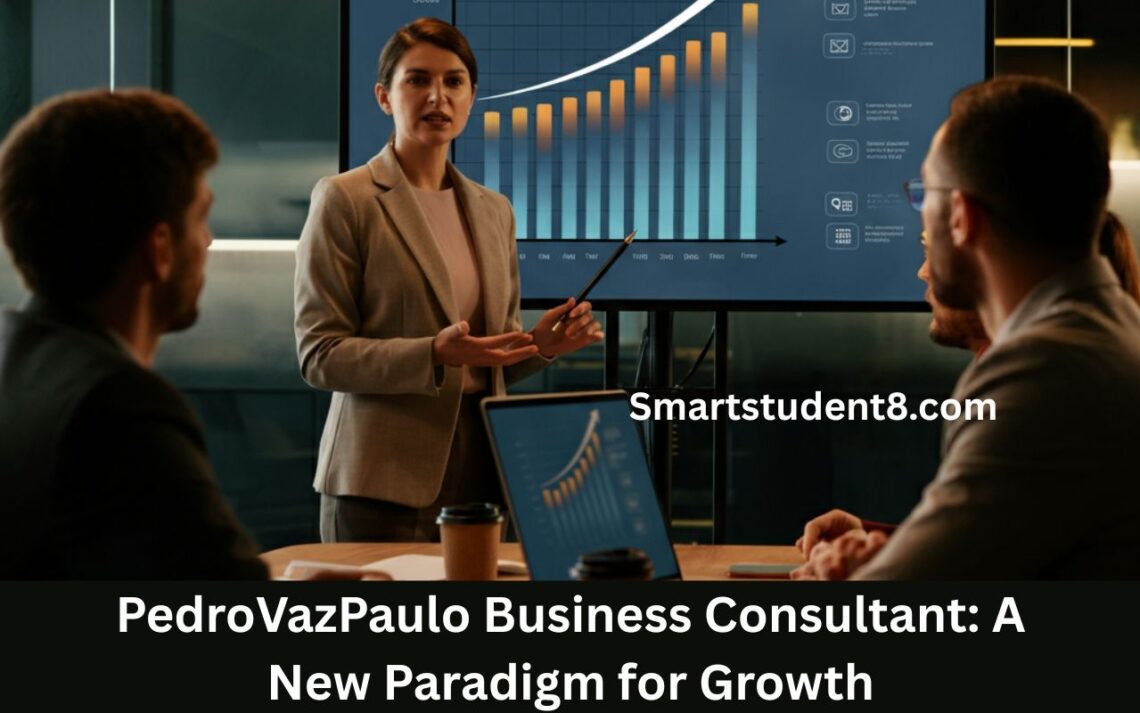In the competitive landscape of modern commerce, businesses are constantly searching for an edge—a way to cut through the noise, optimize performance, and achieve sustainable growth. This search often leads them to the door of a business consultant, an expert tasked with providing an outside perspective and a strategic roadmap. However, not all consultants are created equal. The name Pedro Vaz Paulo has emerged as a significant force in the consulting world, representing a shift from temporary fixes to foundational, long-term transformation. His approach goes beyond traditional advice, focusing instead on building resilient organizations from the inside out.
For many companies, the experience with consultants can be a mixed bag of complex frameworks and impressive presentations that ultimately fail to translate into real-world results. The Pedrovazpaulo business consultant model was born from a recognition of this gap. It’s an approach grounded in the belief that true growth is a product of integrated strategy, operational excellence, and empowered leadership. It’s about creating a cohesive system where every part of the business works in harmony toward a unified goal, ensuring that the strategies developed in the boardroom are effectively executed on the front lines.
This article delves into the unique methodology of Pedro Vaz Paulo, exploring the core principles that define his work. We will examine how his firm blends strategic foresight with practical, hands-on implementation to drive measurable success for clients. From revitalizing struggling startups to guiding established enterprises through digital transformation, the impact is clear. This is a look into a new paradigm for business consulting—one that prioritizes partnership, tangible results, and the creation of future-proof organizations.
The Architect of Strategy: Defining a Clear Path Forward
A well-defined strategy is the foundation upon which all successful businesses are built. Without it, companies drift aimlessly, reacting to market changes rather than proactively shaping their destiny. Pedro Vaz Paulo has distinguished himself as an architect of strategy, guiding organizations in crafting clear, actionable, and ambitious roadmaps. His process is rooted in a deep, analytical dive into the business and its environment. It begins by asking the tough questions that force leadership teams to confront their assumptions and align on a single, powerful vision for the future.
The strategic planning process under his guidance is a collaborative endeavor, not a top-down directive. It involves synthesizing data from market research, competitive analysis, and internal assessments to identify a company’s unique value proposition and position in the marketplace. This allows for the creation of strategies that are not generic but are custom-fitted to the specific challenges and opportunities of each client. The result is a strategic plan that is both inspiring in its vision and practical in its application, with clear milestones and key performance indicators (KPIs) to track progress.
Ultimately, the goal is to create a living strategy that evolves with the business. It’s not about producing a static document but about embedding a strategic mindset within the organization. This involves empowering teams at all levels to understand their role in the bigger picture and to make decisions that align with the company’s long-term objectives. This approach ensures that the strategy remains relevant and effective, serving as a constant guide as the business navigates the complexities of its industry.
Operational Excellence: Turning Strategy into Reality
An innovative strategy is only as good as its execution. This is where Pedro Vaz Paulo’s focus on operational excellence comes into play, serving as the bridge between vision and reality. He understands that the most common point of failure for any strategic plan is a breakdown in the day-to-day processes that are supposed to support it. Inefficient workflows, misaligned resources, and poor communication can quickly derail even the most brilliant ideas. His consulting work places immense emphasis on strengthening the “engine room” of the business to ensure it can support and accelerate growth.
The process of optimizing operations begins with a comprehensive audit of existing systems and workflows. This often involves process mapping, a technique used to visualize how work gets done and identify hidden bottlenecks, redundancies, and areas of waste. By making these inefficiencies visible, it becomes possible to re-engineer them for greater performance. For example, his work with clients has included:
- Streamlining supply chains to reduce lead times and costs.
- Implementing new technologies to automate repetitive tasks and free up employees for more strategic work.
- Redesigning customer service protocols to improve satisfaction and retention.
This hands-on approach ensures that operational improvements are not just theoretical but are implemented in a way that delivers tangible benefits. The focus is on creating scalable systems that can handle increased demand without sacrificing quality or efficiency. By building a robust operational foundation, businesses are better equipped to execute their strategic plans with precision and consistency, turning ambitious goals into measurable achievements.
Leadership Development: The Human Element of Success
In an era increasingly dominated by data and technology, Pedro Vaz Paulo places a profound emphasis on the human element of business success. He recognizes that people drive true transformation, and at the heart of any thriving organization are strong, effective leaders. Digital tools and advanced analytics are powerful, but they are most effective when wielded by leaders who possess the vision, adaptability, and emotional intelligence to inspire their teams. A core component of his consulting services is therefore dedicated to executive coaching and leadership development.
This coaching is a personalized and intensive process designed to unlock the full potential of a company’s leadership team. It moves beyond generic management training to address the specific challenges and development needs of each individual. The program is designed to build critical competencies required for modern leadership, such as managing complex change, fostering a culture of innovation, and communicating with impact. Leaders learn to not only manage their teams but to empower them, creating an environment of trust, accountability, and shared purpose.
This focus on the human side of the business is what creates lasting change. When leaders are equipped with the right skills and mindset, they become catalysts for growth, capable of steering their organizations through uncertainty and motivating their teams to perform at their best. The development of this leadership capacity ensures that the positive changes implemented during the consulting engagement are sustained long after it ends. It’s an investment in the people who will ultimately determine the company’s future success.
A Record of Transformation: Real-World Impact
The value of a business consultant is best measured by the tangible results they deliver for their clients. The Pedrovazpaulo business consultant portfolio is filled with stories of significant transformation, showcasing the real-world impact of his integrated approach. These case studies serve as powerful testaments to a methodology that consistently turns challenges into opportunities. Whether it’s guiding a company back from the brink or helping a stable business reach new heights, the focus is always on creating measurable and sustainable value.
One compelling example is the revitalization of a technology startup that was struggling with cash flow issues and a lack of market focus. Through intensive financial restructuring and strategic repositioning, Pedro Vaz Paulo helped the company stabilize its finances and identify a profitable niche. This was followed by an operational overhaul that streamlined their product development cycle, enabling them to innovate faster and respond more effectively to customer needs. Within two years, the company had achieved profitability and secured its position as a market leader.
In another instance, a multi-generational family business was facing stagnation, burdened by outdated processes and resistance to change. The engagement began with building trust and demonstrating the benefits of modernization through targeted, high-impact projects. This paved the way for a broader transformation that included implementing new technologies and coaching the next generation of leaders. The results were dramatic:
- Increased Efficiency: Operational costs were reduced by over 20% through process optimization.
- Market Expansion: The company successfully expanded its operations from a regional player to a national brand.
- Smooth Transition: The succession process was managed effectively, ensuring the company’s long-term stability and continued growth.
These examples highlight a consistent theme: a holistic approach that addresses strategy, operations, and leadership in concert is the key to unlocking profound and lasting business transformation.





